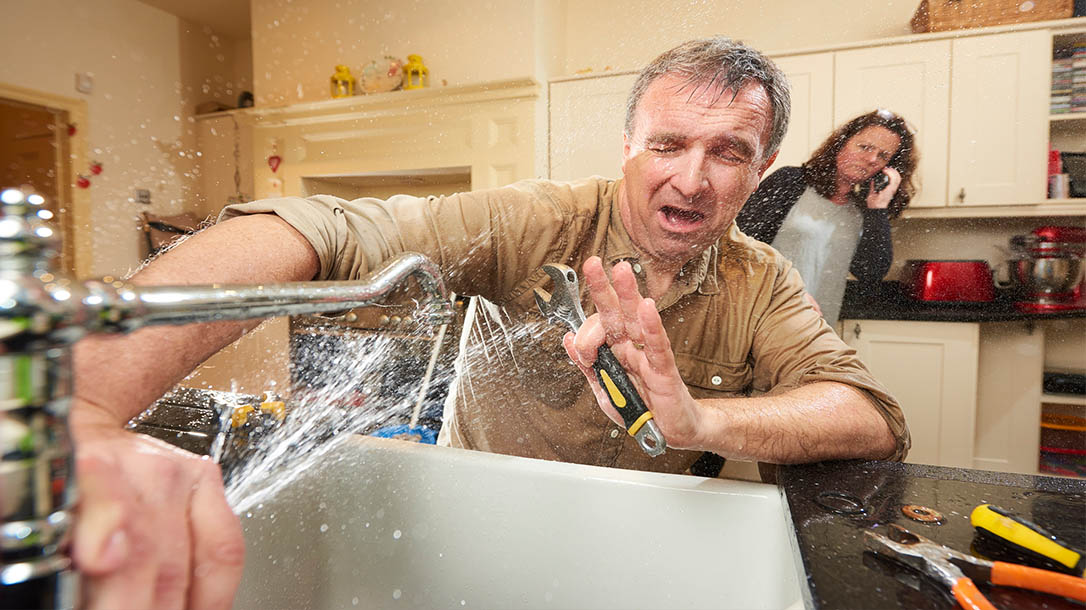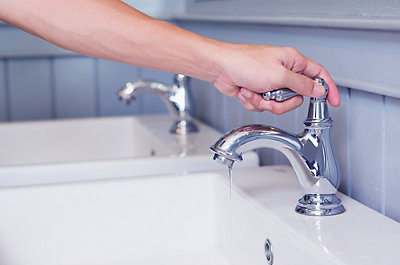An Causes Behind Resolving a Faulty Faucet
An Causes Behind Resolving a Faulty Faucet
Blog Article
What are your thoughts on Leaky Faucets: Why They Happen & What to Do About Them?

Trickling taps might seem like a minor trouble, however their influence goes beyond just the inconvenience of the sound. From wasting water to incurring unnecessary financial costs and health risks, ignoring a dripping faucet can lead to numerous effects. In this article, we'll delve into why it's vital to address this usual home problem quickly and properly.
Wastefulness of Water
Ecological Impact
Leaking taps add considerably to water waste. According to the Epa (EPA), a solitary faucet dripping at one drip per second can lose greater than 3,000 gallons of water each year. This not only strains water resources but likewise impacts communities and wildlife depending on them.
Step-by-Step Guide to Fixing a Dripping Tap
Tools Called for
Before trying to fix a trickling faucet, gather the essential tools, consisting of a flexible wrench, screwdrivers, replacement components (such as washing machines or cartridges), and plumber's tape.
Common Faucet Issues and Their Solutions
Recognize the type of faucet and the certain concern causing the drip. Common issues consist of worn-out washers, corroded valve seats, or malfunctioning O-rings. Describe supplier guidelines or online tutorials for step-by-step guidance on repairs.
Financial Prices
Raised Water Costs
Past the environmental impact, dripping faucets can inflate water costs considerably. The collected waste over time translates right into higher utility expenditures, which might have been avoided with prompt repair services.
Potential Home Damage
In addition, extended trickling can result in harm to fixtures and surface areas surrounding the tap. Water accumulation can trigger staining, rust, and also structural problems if left neglected, leading to additional repair service prices.
Health Worries
Mold And Mildew and Mildew Growth
The continuous visibility of moisture from a leaking tap develops an ideal atmosphere for mold and mold development. These fungis not only compromise indoor air high quality yet additionally posture wellness risks, specifically for people with breathing problems or allergies.
Waterborne Conditions
Stagnant water in leaking taps can become a breeding ground for bacteria and other virus, raising the danger of waterborne conditions. Pollutants such as Legionella bacteria prosper in stationary water, possibly bring about major diseases when consumed or breathed in.
Do it yourself vs. Specialist Repair
Benefits and drawbacks of Do It Yourself Fixing
While some may attempt to deal with a dripping tap themselves, do it yourself repairs feature their very own set of challenges. Without correct expertise and tools, DIY efforts can worsen the issue or bring about insufficient repair work, lengthening the issue.
Advantages of Employing an Expert Plumber
Hiring an expert plumber ensures that the underlying root cause of the dripping faucet is resolved efficiently. Plumbers possess the experience and devices to identify and fix tap concerns effectively, conserving time and reducing the danger of more damages.
Environmental Responsibility
Private Contribution to Preservation
Taking responsibility for dealing with trickling faucets straightens with wider efforts toward water preservation and environmental sustainability. Every individual's activities jointly make a substantial effect on maintaining precious resources.
Lasting Living Practices
By focusing on punctual repairs and embracing water-saving routines, people contribute to sustainable living practices that profit both existing and future generations.
Preventive Measures
Regular Upkeep Tips
To stop trickling taps, carry out regular maintenance such as cleaning up aerators, evaluating for leaks, and replacing worn-out parts immediately. In addition, take into consideration installing water-saving devices or upgrading to much more effective components.
Importance of Prompt Fixes
Dealing with dripping faucets as soon as they're discovered stops more water wastefulness and possible damages, ultimately saving both water and money over time.
Effect On Property Value
Assumption of Well-Maintained Property
Keeping a home in good condition, consisting of resolving upkeep problems like dripping taps, improves its perceived worth and charm among possible purchasers or renters.
Impact on Resale Worth
Qualities with well-kept plumbing fixtures, including taps, command higher resale worths in the real estate market. Resolving dripping taps can add to a positive perception throughout residential property inspections and arrangements.
Final thought
Addressing a trickling tap goes beyond plain comfort; it's an important action towards preserving water, reducing monetary expenses, and guarding health and residential property. Whether via do it yourself repair work or expert support, acting to deal with trickling taps is a little yet impactful method to advertise accountable stewardship of sources and add to a healthier, much more sustainable future.
How to Fix a Leaky Faucet: Step-by-Step Repair Guide
A leaky faucet may seem like a simple annoyance, but if it's not fixed promptly, that leak could cost hundreds to potentially thousands. From water damage to mold, mildew, and high water bills, even a tiny leak can be catastrophic if left unattended. Damage like this can even affect the overall value of your home, so it's important to take the right approach for leaky faucet repair. You may need the help of a plumber in some cases, but we've got a few tips you can try on how to fix a leaky faucet before calling the pros.
Four Faucet Types
When you're learning how to fix a leaky faucet, the first step is knowing what kind of faucet you're working with! There are four common types.
Cartridge Faucets
Cartridge faucets come in one- or two-handled varieties. In one-handled cartridge faucets, hot and cold water combines in a single cartridge. In the two-handled versions, hot and cold water are controlled separately and mixed in the faucet.
Ball Faucets
Ball faucets have a single lever you push up and down to adjust the pressure and rotate to change the temperature. A slotted metal ball controls the amount of water allowed into the spout.
Compression Washer Faucets
They're the oldest type of faucet, but they're still used in many homes — especially older ones. Compression faucets have two separate handles that, when turned, raise or lower the washer that seals a water valve. This valve stops water from flowing through the faucet when it is turned off.
Disc Faucets
Disc faucets rarely need to be repaired due to their maintenance-free design. The water flow is controlled by two discs — the upper one raises and lowers against a fixed lower disc, creating a watertight seal. If your disc faucet starts leaking, you may need to replace the seals or clean residue buildup from the inlets.
Fixing a Leaky Faucet
Step 1: Turn Off the Water
Whether you're learning how to fix a leaky bathtub faucet or how to fix a leaky kitchen faucet, always turn off the water supply to your working area when you're fixing a leak. The last thing you want is a flood added to your list of things to fix.
Look for the shutoff valves below your sink or around the tub and turn them clockwise to stop the water flow. If your faucet doesn't have shutoff valves, you may need to turn off the water for the whole house. Check to make sure it's off by turning the faucet on. If nothing comes out, you're ready to start the repair.
Step 2: Take Apart the Faucet
How you disassemble your faucet depends on the type of fixture you have. You can use a flathead screwdriver to remove the caps on top of the handle or handles for cartridge and compression faucets. Inside, you should see handle screws. Unscrew these with a screwdriver to remove the handle.
Disc- and ball-style faucets will typically have an inlet screw near the handle, and removing that will reveal the interior of the faucet.
Detach the Valve Stem
For cartridge- and compression-style faucets, you'll see the inner valve stem or cartridge once you remove the faucet handles. If you have a compression faucet, unscrew the brass valve stem. If you have a cartridge faucet, pull out the cartridge. If your cartridge has been in place for a while, it may require some tools or extra force to remove it due to mineral deposits.
Examine and Replace Parts
Once you've removed the parts, check them out to confirm what needs to be replaced. You may see corroded rubber washers, O-rings, stems, or cartridges. On a ball-style faucet, check the seats and springs for damage.
If you need to repair a leaky disc faucet, check the inlet and seals on the lower disc.
Once you determine what parts must be replaced, visit your local hardware store. Bring the damaged parts with you to ensure you can purchase the correct components to replace them.
Clean Valves and Faucet Cavity
If you've removed a stem or cartridge, you may notice mineral buildup in the faucet's threads. Use white vinegar to clean the valve seat by soaking it for a few minutes, then scrub it away with a soft toothbrush and rinse with warm water. You can also clean the interior of the faucet in the same way.
Reassemble the Faucet
Once your faucet is cleaned and the required parts have been replaced, it's time to reassemble it. Put the pieces back together and slowly turn the water supply back on. Doing this slowly is crucial because too much initial water pressure can damage the new hardware you've just installed.
https://homewarranty.firstam.com/blog/how-to-fix-leaky-faucet

We had been guided to that write-up about How to Fix a Dripping or Leaky Faucet from a buddy on a different web blog. So long as you enjoyed our post kindly remember to share it. I enjoy reading our article about What Causes Leaky Faucets & How To Fix Them.
Report this page